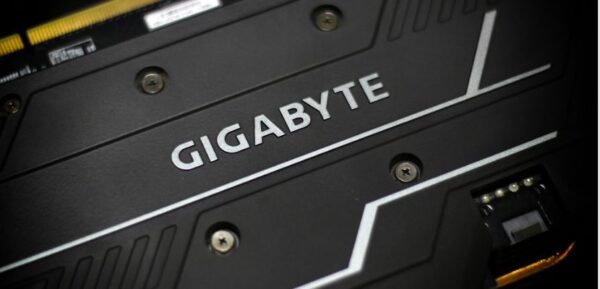From Humble Beginnings to a Tech Titan: The History of Gigabyte Motherboards
Introduction: The Foundation of a Legacy
In the sprawling ecosystem of PC hardware, few names are as recognizable and enduring as Gigabyte Technology. For over three decades, Gigabyte has been a cornerstone of the industry, particularly in the realm of motherboards. Its journey from a small startup to a global powerhouse is a story of innovation, strategic adaptation, and an unwavering focus on quality and durability. This history traces the evolution of Gigabyte motherboards, from their first tentative steps into the market to their current status as a leading force in high-performance computing.
Chapter 1: The Birth and Early Years (1986 – 1994)
Gigabyte Technology was founded in 1986 by Pei-Cheng Yeh, with a modest initial capital of NT$10 million and a handful of engineers. The company’s early focus was on research and development of PC peripherals, but it quickly identified the motherboard as the central, critical component of every PC—a market with immense potential.
In 1989, just three years after its founding, Gigabyte released its first motherboard. This was the era of the Intel 386 and 486 processors. The market was fragmented, with numerous small players, and establishing a reputation was paramount. Gigabyte’s strategy from the very beginning was to differentiate itself not on price, but on quality and stability. While other manufacturers cut corners, Gigabyte invested in better PCB materials, stricter quality control, and more robust circuit design. This commitment to building reliable products quickly earned them a loyal following among system integrators and early PC enthusiasts who valued a stable system over a cheap one.
Chapter 2: Establishing an Identity – The Ultra Durable Era (1995 – 2005)
The late 1990s and early 2000s were a period of massive growth and consolidation in the PC industry. Gigabyte not only survived but thrived, becoming a top-tier motherboard manufacturer alongside rivals like ASUS and MSI.
This era was defined by several key developments:
- Rapid Adoption of New Standards: Gigabyte was an early adopter of new technologies like the AGP slot for graphics cards, the ATA-100 standard for hard drives, and later, the revolutionary PCI Express (PCIe) interface. Their ability to quickly integrate these standards into stable products kept them at the forefront.
- BIOS and Software Innovation: Gigabyte began investing in user-friendly software, such as the @BIOS utility for flashing the BIOS from within Windows and the EasyTune overclocking utility. These tools made advanced features more accessible to a broader audience.
- The Birth of a Philosophy: Ultra Durable: While the official marketing term would come later, the foundation of Gigabyte’s “Ultra Durable” philosophy was laid here. The company started using higher-quality components, like Japanese-made capacitors, which were less prone to leaking and failing than the cheaper Taiwanese capacitors used by many competitors. This focus on longevity became a core brand identity.
Chapter 3: The Golden Age of Enthusiast Gear and Brand Differentiation (2006 – 2015)
The mid-2000s saw the PC enthusiast community explode, fueled by online forums, gaming, and overclocking. Gigabyte responded by creating distinct product lines tailored to different user segments. This was the most transformative period in the company’s history.
- 2006: The “Ultra Durable” Brand is Born: Gigabyte formally launched its “Ultra Durable” campaign, highlighting the use of solid capacitors, ferrite core chokes, and lower RDS(on) MOSFETs across its entire motherboard lineup. This wasn’t just marketing; it was a tangible commitment to quality that resulted in motherboards that could handle more power, run cooler, and last significantly longer. It was a massive success and remains the bedrock of the brand today.
- Product Segmentation:
- Gaming Series: Recognizing the gaming market’s potential, Gigabyte launched lines like the GA-X58A-UD7 for the Intel Core i7 platform, featuring robust power delivery for overclocking and NVIDIA SLI/AMD CrossFire support.
- The Arrival of AORUS (2014): The most significant move was the creation of the AORUS brand. Initially introduced as a gaming laptop, the brand’s eagle logo would soon become synonymous with Gigabyte’s absolute highest-end motherboards. AORUS boards were designed to be feature-packed, with extravagant VRM designs, advanced cooling solutions, RGB lighting, and aggressive aesthetics aimed directly at hardcore gamers and overclockers.
- Dual BIOS: A simple but genius innovation, Gigabyte’s Dual BIOS technology featured a backup BIOS chip that could automatically recover the main BIOS if a flash failed or became corrupted. This saved countless users from bricking their motherboards and became an industry-standard safety feature.
Chapter 4: The Modern Era – Refinement, RGB, and the Platform War (2016 – Present)
The recent era has been characterized by intense competition, the rise of RGB aesthetics, and a battle for platform supremacy between Intel and AMD.
- The AMD Renaissance: With AMD’s launch of the wildly successful Ryzen processors in 2017, Gigabyte, like all manufacturers, had to compete fiercely on both the Intel and AMD fronts. They developed robust motherboards for AMD’s AM4 platform, such as the X570 AORUS Master, which were praised for their strong power delivery and feature sets, capturing a significant share of the resurgent AMD market.
- AORUS Ascendancy: The AORUS sub-brand became fully realized, expanding into a complete ecosystem of components (GPUs, monitors, peripherals). For motherboards, AORUS now represents the pinnacle of Gigabyte’s engineering, competing directly with ASUS ROG and MSI MEG series.
- Refinement of Ultra Durable: The philosophy continued to evolve. New iterations introduced direct-touch heat pipes, shrouds covering the entire motherboard, and even more advanced power stages (like their “Direct Digital VRM”) to handle the immense power demands of modern CPUs like Intel’s 12th-13th-14th Gen Core series and AMD’s Ryzen 9 processors.
- Focus on Connectivity and Cooling: Modern Gigabyte boards are defined by their extensive connectivity: numerous M.2 slots for NVMe SSDs, Thunderbolt 4 support, 2.5GbE or even 10GbE LAN, and Wi-Fi 6E/7. Advanced cooling solutions for both the VRM and M.2 drives have become standard on mid-range and high-end models.
- Software and Aesthetics: The GIGABYTE CONTROL CENTER (GCC) software suite unifies control over RGB lighting, performance tuning, and driver updates. While software has historically been a pain point for all motherboard makers, Gigabyte has made significant strides in creating a more cohesive user experience.
Conclusion: A Legacy Built on Reliability
From its first 486 motherboard to the cutting-edge Intel Z790 and AMD X670E AORUS XTREME boards of today, Gigabyte’s history is a testament to consistent execution of a core philosophy: build it durable, and the customers will come.
They navigated the seismic shifts in the PC industry—from the rise of the DIY enthusiast and the gamer to the battle between CPU giants—not by being the flashiest, but by being one of the most reliable. The “Ultra Durable” mantra is more than a slogan; it’s the DNA of the company. By earning the trust of system builders and consumers through decades of quality products, Gigabyte has cemented its place as a true titan of the motherboard world, whose history is intrinsically woven into the very fabric of personal computing.











